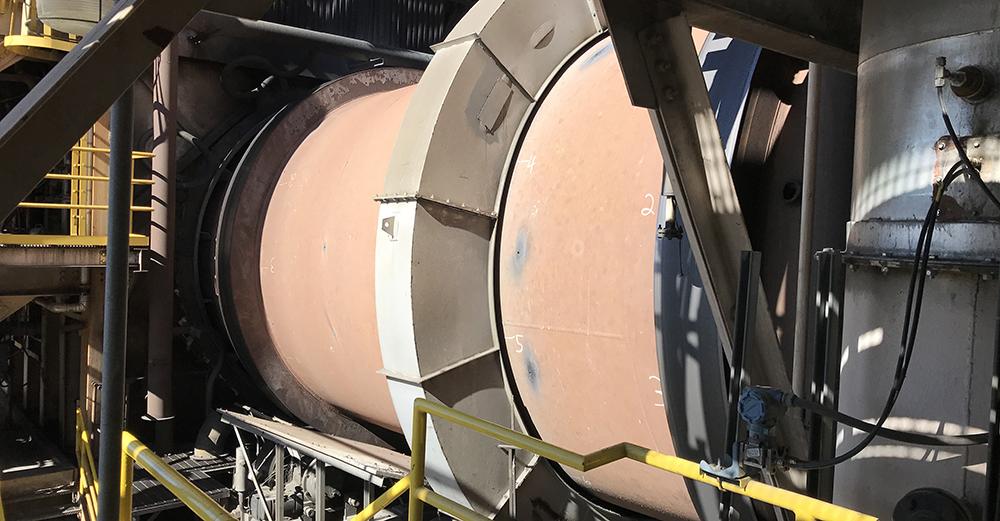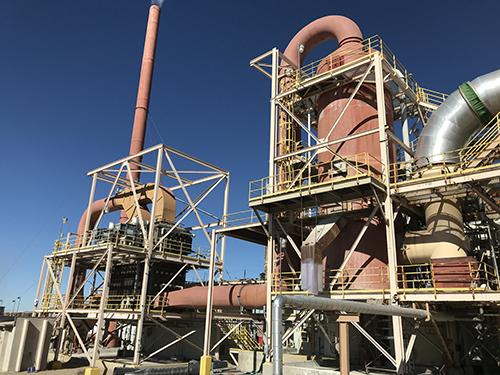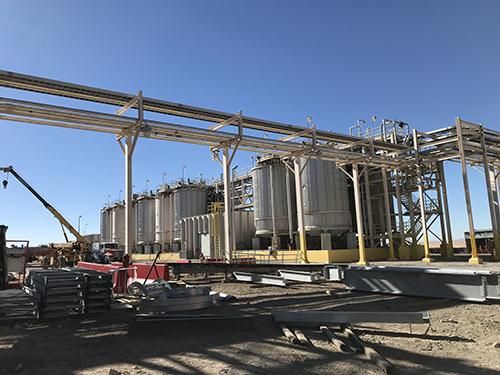Client: Clean Harbors
Location: Various
EA is supporting Clean Harbors, the leading provider of hazardous waste treatment and disposal services in North America, with per- and polyfluoroalkyl substances (PFAS) destruction testing at multiple Resource Conservation and Recovery Act (RCRA)-permitted hazardous waste combustors (HWCs) in different states.

Clean Harbors Aragonite HWC Rotary Kiln Used in PFAS Destruction Testing
The U.S. Environmental Protection Agency’s (EPA’s) 2020 Interim Guidance on the Destruction and Disposal of Perfluoroalkyl and Polyfluoroalkyl Substances and Materials Containing Perfluoroalkyl and Polyfluoroalkyl Substances identified three readily available disposal technologies for PFAS-impacted materials: landfilling, deep well injection, and incineration. Of the three, only incineration is capable of destroying PFAS compounds. Although promising in principle, prior to the 2020 timeframe, there was only very limited data on thermal treatment of PFAS in full scale systems. Specifically, destruction and removal efficiency (DRE) and air emissions were not well documented.

Clean Harbors Aragonite HWC Air Pollution Control Systems
To help address the need for these data, EA was retained by Clean Harbors to conduct PFAS destruction testing at its RCRA-permitted HWCs, which operate in several different states. The first test was conducted at the Aragonite, Utah HWC and was completed in 2021. EA was responsible for test program execution including the following:
- Developing the sampling program
- Purchasing, managing, and assembling PFAS spiking chemicals
- Sampling process streams, including liquid feed wastes, treatment chemicals, and process residuals with triplicate testing for baseline, PFAS spiking, and aqueous film-forming foam (AFFF) concentrate feed conditions
- Subcontracting stack gas sampling in accordance with EPA Other Test Method (OTM)-45
- Subcontracting analytical services for reporting 49 target PFAS analytes by LC/MS/MS Isotope Dilution methods, as well as Total Organic Precursor Assay (TOPA) and Total Organic Fluorine (TOF) performed on AFFF concentrate present in the waste feed
In coordination with Focus Environmental, who provided technical oversight, EA developed the overall PFAS mass balance and a fluorine mass balance, considering TOPA, TOF assay, and inorganic fluorine analyses. The project required significant research and innovation since regulations governing PFAS treatment and sampling and analytical methods for PFAS detection are still in development. The study ultimately demonstrated >99.9999% DRE of targeted PFAS (including PFOA, PFOS, PFHxS, and Gen-X) in the waste feed materials plus PFAS spiking materials, and PFAS stack emission rates resulted in modeled ambient air impacts orders of magnitude lower than existing PFAS ambient air standards documented in any state regulations.

Clean Harbors Aragonite HWC Tank Farm
Waste streams including AFFF concentrate were shown by TOPA analysis to contain significant amounts of per- and polyfluorinated mass that was oxidizable to PFAS—up to two orders of magnitude more than revealed by targeted PFAS analysis. Incineration process conditions have a similar effect to TOPA analysis on oxidizable PFAS precursor mass. Therefore, the PFAS inputs, including oxidizable precursors, are likely much higher than detectable levels of PFAS normally analyzed by standard EPA methods targeted specifically for known PFAS compounds in the waste feed. This effect would mean that when materials such as AFFF concentrate are incinerated, the actual DRE is probably higher than the calculated DRE, based solely on waste feed targeted PFAS analyte content and concentration of PFAS in the stack gas.
The PFAS destruction testing at the Aragonite facility was repeated by EA in 2022 to confirm the results from the 2021 tests. As a result of the positive test results, Clean Harbors intends to have Focus Environmental and EA conduct similar testing at its other HWC locations. Data from the initial testing have been shared with EPA and the project provides vital information for the development of future regulatory and process guidance for disposal and treatment of PFAS-impacted materials.
